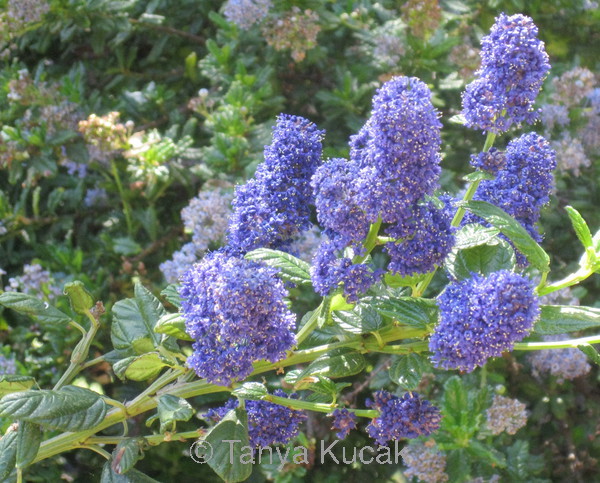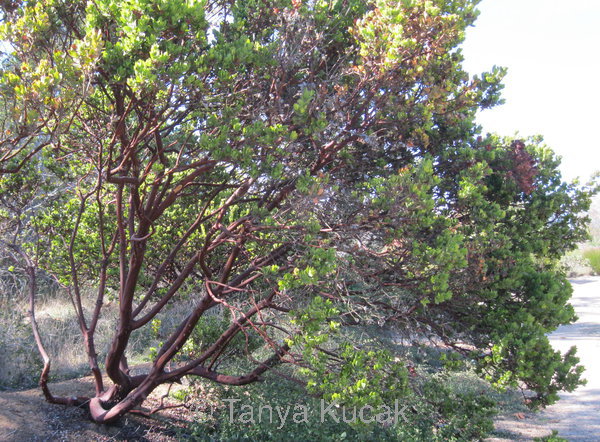
Be respectful and have fun,“ Jocelyn Cohen said, summarizing her pointers for pruning some common native shrubs. She described how to prune manzanita, ceanothus, and toyon at a recent San Francisco Flower and Garden Show talk.
”Look to nature, mimic nature,“ but you can't always do what nature does itself, she said.
Timing is important. For drought-tolerant shrubs adapted to a summer-dry climate, the dormant season is summer. Cool fall nights trigger dormant buds, so the best time to prune is before buds are set. For best results, prune from late summer to early fall. If you prune after the plant has already put energy into new leaves and buds, it may not have the energy reserves to set new buds, she said.
The essence of manzanitas is the ”gorgeous mahogany bark“ 12 months of the year, Cohen said. To show the elegant trunk to best advantage, it's important to keep the trunk flare – the place where the trunk is a little wider at the base of the plant – clear of duff, weeds, and herbaceous plants.
Cohen showed before and after pictures of a well-pruned Sentinel manzanita. Before, it looked like a big shrub covered with leaves. After, the sinuous trunk was visible. ”Keep plenty of interior foliage“ when you prune, she said, and make sure light can reach the interior foliage so it stays alive.
When a manzanita has lots of dead leaves, you can shake it to clean it out. Not only does it look neater, but this ”tickling“ also promotes more vigorous growth.
The essence of ceanothus is the flowers. One of the most common cultivars, Yankee Point, tends to ”grow and roll“ in a cascading form. Cohen advised playing with the layers to keep the lower layers open to light. Without any pruning, eventually you can end up with an 8 ft. high plant that has leaves only on the outside layers. ”Anything shaded out will die,“ she said. ”You always want to open it up.“
Likewise, if a ceanothus (or an oak or a garrya) is sheared into a hedge, it won't be able to sustain any inner growth. It may be possible, however, to renovate a sheared plant. Cohen showed an example of a coast live oak that had been shaped like a lollipop on a stick. Over 5 years, she was able to prune it into a more natural form by gradually opening it up. Most of her work as an aesthetic pruner is ”cleaning up people's bad work,“ she said.
Toyon's natural tendency is to form multiple trunks. To avoid ”tons“ of annual maintenance, remove some extra stems at the base when the plant is young. It's ”three times harder“ to remove stems when an overgrown plant is older, she said. ”Don't leave a stub,“ Cohen said. ”It doesn't take any longer to cut it right than to cut it wrong.“ If you can't make a proper cut with a regular pruning saw in tight areas, you're not using the correct tool, she said. ”Get a keyhole saw."
If you prefer a single-trunked toyon, you can choose a single trunk when the plant is young. Though toyon usually has a rounded form, you can also train it against a wall or fence as an espalier.

The essence of ceanothus is the abundance of blue flowers in the spring. To keep the shrubs healthy, make sure light can reach the interior foliage and that any cascading stems aren't blocking too much light.

The essence of shrub manzanitas is the sinuous mahogany trunk and branches. If the foliage hides the bark, prune selectively to open up the center so the bark is visible year-round. This Montara manzanita is a mature specimen at an arboretum.

Toyons naturally want to have multiple stems. This one is growing right next to a coast live oak in a natural setting. The red berries make this evergreen stand out in fall and winter.
© 2015 Tanya Kucak